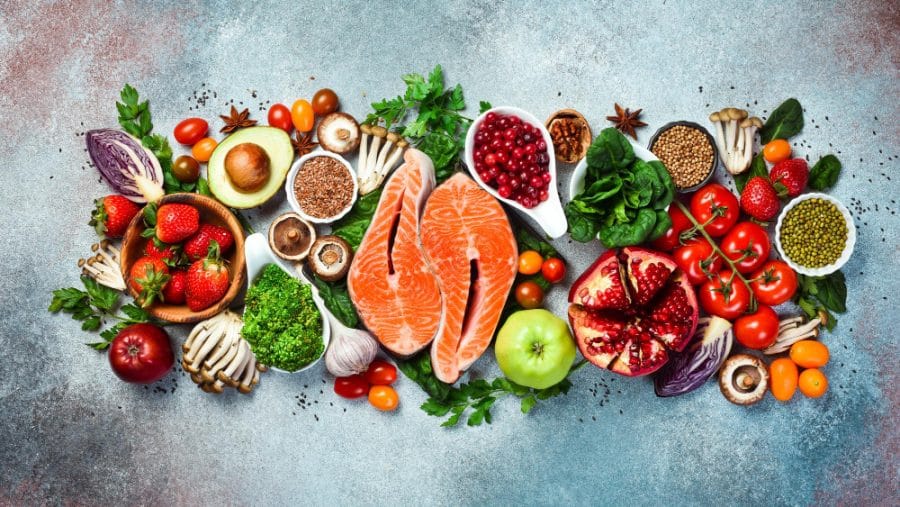Introduction
A balanced diet is the cornerstone of good health, yet many people struggle to understand exactly what it means and how to achieve it. Simply put, a balanced diet provides your body with the nutrients it needs to function properly. This includes a combination of macronutrients—carbohydrates, proteins, and fats—as well as micronutrients like vitamins and minerals. It also involves proper hydration through water intake. When your body receives the right balance of these nutrients, it can perform optimally, leading to better energy levels, improved mental clarity, and enhanced overall well-being.
In today's fast-paced world, many of us rely on processed and convenience foods that are often high in sugars, unhealthy fats, and empty calories. This can lead to various health issues, including weight gain, fatigue, and an increased risk of chronic diseases such as heart disease, diabetes, and obesity. A balanced diet, on the other hand, supports weight management, strengthens the immune system, and helps prevent these conditions.
Moreover, eating a variety of nutrient-dense foods helps fuel the body and mind, allowing you to feel your best every day. The benefits of a balanced diet go beyond physical health—it can improve mood, cognitive function, and even your sleep patterns.
Understanding what a balanced diet entails is the first step in adopting healthier eating habits. In this guide, we will explore the components of a balanced diet, how to create balanced meals and practical tips for incorporating nutritious foods into your daily life.
Section 1: What is a Balanced Diet?
Definition of a Balanced Diet
A balanced diet refers to consuming a variety of foods in the right proportions to ensure the body receives all essential nutrients. It is about finding the perfect balance between different food groups—carbohydrates, proteins, fats, vitamins, and minerals—to fuel your body effectively. Each nutrient plays a specific role, from providing energy to supporting cellular functions, so achieving this balance is crucial for maintaining optimal health.
A balanced diet doesn’t mean restrictive eating or cutting out entire food groups. Instead, it focuses on moderation and variety. By consuming a range of foods, you provide your body with the diverse nutrients it needs to function well, both physically and mentally.
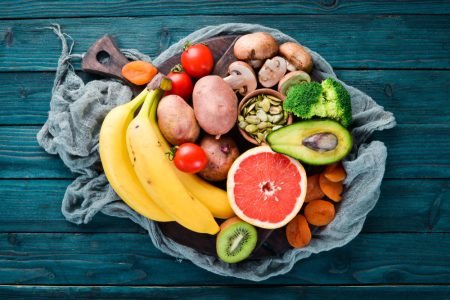
Key Components of a Balanced Diet
- Macronutrients: Carbohydrates, Proteins, and Fats
- Carbohydrates: These are the body’s primary source of energy. Found in fruits, vegetables, grains, and legumes, they fuel the brain, muscles, and organs. Complex carbohydrates like whole grains and vegetables are preferred over simple carbs (sugars and refined grains) because they provide sustained energy and contain fiber, which aids digestion.
- Proteins: Proteins are essential for tissue repair, muscle building, and enzyme function. Sources include lean meats, poultry, fish, eggs, dairy products, legumes, and nuts. For vegetarians and vegans, plant-based proteins like tofu, quinoa, and lentils are excellent alternatives.
- Fats: Healthy fats are vital for brain function, hormone production, and absorbing fat-soluble vitamins (A, D, E, K). Unsaturated fats found in olive oil, avocados, nuts, and seeds are essential, while trans fats and excessive saturated fats should be minimized.
- Micronutrients: Vitamins and Minerals
Micronutrients, including vitamins and minerals, are necessary for various bodily functions, such as bone health, immune support, and metabolism. Vitamins like A, C, D, and B-complex vitamins are critical for everything from vision to energy production, while minerals like calcium, iron, and magnesium are needed for strong bones, oxygen transport, and muscle function.
These nutrients are best obtained through a diverse diet rich in fruits, vegetables, nuts, seeds, and whole grains. Relying on processed foods can often result in deficiencies, as they tend to be stripped of essential nutrients.
Hydration: The Role of Water in a Balanced Diet
Water is often overlooked but is a crucial part of a balanced diet. It helps regulate body temperature, supports digestion, transports nutrients, and removes waste. Adults should aim to drink around 8-10 glasses of water daily, but this can vary based on activity level, climate, and individual needs. Hydration also includes water-rich foods like fruits and vegetables, which contribute to daily water intake.
A balanced diet is not just about the foods you eat but also about staying properly hydrated for optimal bodily functions.
Section 2: Why is a Balanced Diet Important?
Health Benefits of a Balanced Diet
A balanced diet is essential for maintaining overall health and well-being. It provides your body with the nutrients it needs to function properly, which in turn supports several critical processes:
- Enhances Energy Levels: A balanced intake of carbohydrates, proteins, and fats ensures that your body has a steady supply of energy throughout the day. Carbohydrates are especially crucial as they are the primary source of fuel for the brain and muscles, while proteins and fats provide long-term energy and support other vital functions.
- Strengthens the Immune System: Vitamins and minerals, particularly vitamin C, vitamin D, and zinc, play a key role in boosting the immune system. A diet rich in fruits, vegetables, and lean proteins supports the body's ability to fight infections and recover from illness more quickly.
- Supports Mental Health: A balanced diet not only affects physical health but also has a profound impact on mental well-being. Studies have shown that nutrient-rich foods, particularly those containing omega-3 fatty acids, B vitamins, and antioxidants, can improve mood, reduce stress, and enhance cognitive function. On the other hand, diets high in processed foods and sugars can lead to mood swings, anxiety, and even depression.
- Prevents Chronic Diseases: A well-rounded diet helps reduce the risk of chronic diseases such as heart disease, type 2 diabetes, and certain cancers. For instance, diets rich in fiber, healthy fats, and antioxidants help control blood pressure, cholesterol levels, and blood sugar, all of which are crucial in preventing these conditions.
Risks of an Unbalanced Diet
An unbalanced diet, one that is deficient in essential nutrients or high in processed, sugary, and fatty foods, can lead to numerous health issues:
- Nutrient Deficiencies: Skipping essential nutrients can result in deficiencies that affect bodily functions. For example, a lack of calcium and vitamin D can weaken bones, leading to osteoporosis, while insufficient iron can cause anemia, resulting in fatigue and weakened immunity.
- Weight Gain and Obesity: A diet high in refined sugars, unhealthy fats, and excessive calories can lead to weight gain and obesity. This, in turn, increases the risk of developing conditions like diabetes, heart disease, and joint problems.
- Chronic Diseases: Poor eating habits over time contribute to the development of chronic diseases. Diets rich in processed foods and low in nutrients increase the risk of heart disease, hypertension, type 2 diabetes, and certain cancers.
Long-term Impact on Quality of Life
Eating a balanced diet not only improves immediate health but also has long-term benefits. By maintaining healthy eating habits, you can improve longevity, enjoy a better quality of life, and avoid the physical and emotional burdens of chronic diseases. A well-balanced diet, combined with regular exercise, is a key to living a healthier, more energetic life.
Section 3: The Building Blocks of a Balanced Diet
1. Carbohydrates: The Body’s Primary Energy Source
Carbohydrates are essential for providing the energy your body and brain need to function. When consumed, carbohydrates are broken down into glucose, which fuels your muscles and supports brain function. However, not all carbohydrates are created equal:
- Healthy Sources: Whole grains (such as oats, quinoa, and brown rice), fruits, vegetables, and legumes are examples of complex carbohydrates that are rich in fiber, vitamins, and minerals. These carbs provide slow-releasing energy, which keeps you full longer and helps maintain stable blood sugar levels.
- Carbohydrates to Avoid: Refined carbohydrates, such as those found in white bread, pastries, and sugary snacks, should be limited. These provide quick energy but can lead to blood sugar spikes and crashes, causing fatigue and cravings.
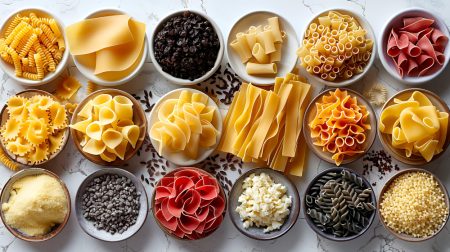
2. Proteins: Building and Repairing Tissues
Proteins are crucial for the growth, maintenance, and repair of tissues. They are made up of amino acids, some of which are essential and must be obtained through diet:
- Healthy Sources: Lean meats like chicken and turkey, fish, eggs, dairy, beans, lentils, and plant-based proteins such as tofu and tempeh are excellent sources of protein. For vegetarians and vegans, combining plant proteins (like rice and beans) ensures you receive all essential amino acids.
- Benefits of Protein: In addition to supporting muscle repair and growth, protein helps regulate hormones, supports immune function, and can aid in weight management by promoting a feeling of fullness.
3. Fats: Essential for Brain and Hormonal Health
While fats have often been viewed negatively, they are an essential part of a balanced diet. Fats support brain function, cell structure, and the absorption of fat-soluble vitamins (A, D, E, and K):
- Healthy Sources: Unsaturated fats, found in olive oil, avocados, nuts, seeds, and fatty fish (like salmon and mackerel), are beneficial for heart health and reducing inflammation. Omega-3 fatty acids, found in fish and flaxseeds, are especially important for brain and cardiovascular health.
- Fats to Limit: Saturated fats, found in butter, red meat, and processed foods, should be consumed in moderation. Trans fats, often found in fried and processed foods, should be avoided as they are linked to heart disease.
4. Vitamins and Minerals: Vital for Bodily Functions
Micronutrients, such as vitamins and minerals, play an essential role in supporting various bodily functions, from bone health to immune support:
- Vitamins: Vitamins like A, C, D, and B-complex vitamins are crucial for vision, energy metabolism, immune function, and skin health. They are primarily found in fruits, vegetables, dairy, and fortified foods.
- Minerals: Minerals like calcium, magnesium, iron, and zinc are essential for strong bones, muscle function, oxygen transport, and a healthy immune system. Dairy products, leafy greens, nuts, seeds, and lean meats are excellent sources.
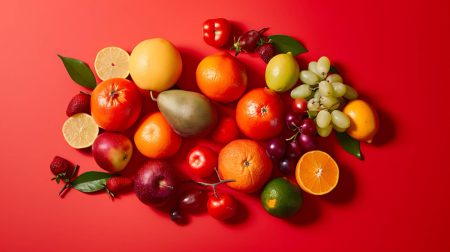
5. Hydration: The Foundation of a Balanced Diet
Water is an essential part of a balanced diet, playing a role in nearly every bodily function. It helps regulate body temperature, aids digestion, flushes toxins, and ensures nutrients are transported to cells:
- Importance of Hydration: Adequate hydration helps with cognitive function, energy levels, and physical performance. Dehydration can lead to fatigue, headaches, and impaired focus.
- Recommended Intake: Adults should aim for 8-10 glasses of water per day, but individual needs may vary based on activity level, climate, and overall health. Water-rich foods like cucumbers, watermelon, and oranges can also contribute to daily hydration.
By incorporating these essential components into your daily meals, you can achieve a balanced diet that fuels your body, supports long-term health, and improves overall well-being.
Section 4: How to Create a Balanced Plate
Portion Control: Understanding the Balance
Portion control is a key aspect of maintaining a balanced diet. It’s not just about what you eat but also how much of each food group you consume. The goal is to create a plate that provides all the necessary nutrients in the right proportions without overeating. A great tool for portion control is the “plate method,” which visually divides your plate into different sections to ensure you’re eating a balanced meal.
- The Ideal Plate: A well-balanced meal should have:
- ½ Plate of Vegetables and Fruits: Vegetables and fruits should make up the largest portion of your plate. They are rich in vitamins, minerals, fiber, and antioxidants, which help support your immune system, improve digestion, and reduce the risk of chronic diseases. Aim to include a variety of colors and types to get a wide range of nutrients.
- ¼ Plate of Whole Grains or Starches: Whole grains like brown rice, quinoa, whole wheat pasta, and sweet potatoes are excellent sources of complex carbohydrates, which provide sustained energy. These grains are also rich in fiber, which helps regulate blood sugar and supports digestive health.
- ¼ Plate of Protein: Lean proteins like chicken, fish, tofu, beans, and lentils should occupy about a quarter of your plate. Proteins are essential for muscle repair, hormone production, and overall cellular function.
Incorporating Healthy Fats
While fats aren’t always visible on the plate, they are an important part of a balanced diet. Healthy fats should be included in small amounts to promote brain health and support vitamin absorption. Add a tablespoon of olive oil for cooking, include a few slices of avocado in your salad, or sprinkle some nuts or seeds on top of your dish.
- Healthy Fat Sources: Use olive oil for cooking, add nuts to your salad, or eat a piece of oily fish like salmon. These healthy fats support brain function, reduce inflammation, and promote heart health.
Sample Meals for a Balanced Diet
Breakfast:
Balanced Plate: Oatmeal topped with fresh berries, chia seeds, and a spoonful of almond butter.
Benefits: The oatmeal provides whole grains, berries supply vitamins and antioxidants, and chia seeds with almond butter offer healthy fats and protein for sustained energy.
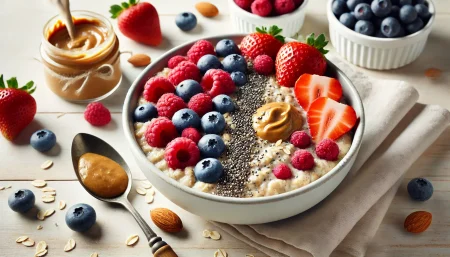
Lunch:
Balanced Plate: Grilled chicken breast with quinoa, roasted vegetables (like broccoli, carrots, and zucchini), and a drizzle of olive oil.
Benefits: The chicken supplies lean protein, quinoa offers complex carbs and fiber, while the vegetables provide an array of vitamins and minerals.
Dinner:
Balanced Plate: Baked salmon with a side of brown rice, steamed spinach, and a mixed green salad with avocado and a light vinaigrette.
Benefits: Salmon is rich in omega-3 fatty acids, brown rice provides complex carbohydrates, and spinach and salad offer vital micronutrients.
Meal Composition: Tips for Everyday Eating
- Variety is Key: Incorporating a wide range of foods ensures that you get different vitamins, minerals, and antioxidants. Try to vary your protein sources, switch up your vegetables, and include different types of whole grains throughout the week.
- Limit Processed Foods: Processed foods often lack essential nutrients and can be high in unhealthy fats, sugar, and sodium. Whenever possible, opt for whole foods, like fresh fruits, vegetables, and lean proteins, and avoid prepackaged or highly processed meals.
- Mindful Eating: Pay attention to your body’s hunger and fullness cues. Eating slowly and savoring each bite can help prevent overeating and allow you to enjoy the flavors and textures of your meal.
By focusing on portion control and creating a balanced plate, you can enjoy nutritious, satisfying meals that meet your body’s needs for energy, growth, and overall health. This method also helps prevent overeating and ensures you’re getting a well-rounded intake of essential nutrients.
Section 5: Special Considerations
1. Dietary Preferences
Each individual’s dietary choices and preferences play a significant role in how they can achieve a balanced diet. Whether it’s due to lifestyle, ethical reasons, or medical conditions, special considerations should be made to ensure that everyone can access a healthy, balanced diet tailored to their needs.
- Vegan and Vegetarian Diets: Individuals following a vegan or vegetarian lifestyle need to ensure they are getting enough protein, iron, calcium, and vitamin B12, which are typically found in animal products. Great plant-based protein sources include lentils, chickpeas, quinoa, tofu, and tempeh. For calcium, fortified plant-based kinds of milk (almond, soy, or oat), leafy greens, and chia seeds are excellent choices. Vitamin B12 can be obtained through fortified cereals or supplements.
- Gluten-Free Diets: Those who follow a gluten-free diet due to celiac disease or gluten sensitivity need to avoid grains such as wheat, barley, and rye. However, they can still enjoy a balanced diet by incorporating gluten-free grains like quinoa, brown rice, and millet. Gluten-free flours like almond flour or coconut flour can also be used in baking and cooking.
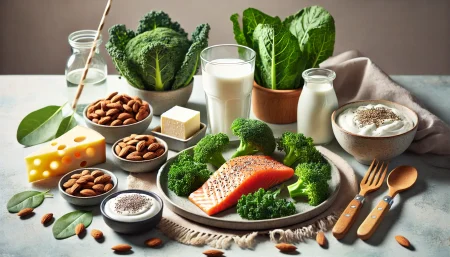
2. Age-Related Dietary Needs
Nutritional needs change throughout life, and older adults, in particular, need to adjust their diet to maintain health.
- For Older Adults: As people age, their metabolism slows down, and their caloric needs may decrease. However, their requirement for certain nutrients, such as calcium, vitamin D, and protein, increases to support bone health and prevent muscle loss. Dairy products, fortified plant-based milks, and lean proteins should be emphasized. Additionally, older adults may need more fiber to support digestion, so consuming more whole grains, fruits, and vegetables is recommended.
3. Fitness Enthusiasts and Athletes
Individuals who are physically active or engage in regular exercise have different nutritional requirements to support their training and recovery.
- Higher Protein Needs: Athletes often require more protein to repair muscle tissue and promote muscle growth. Good protein sources include lean meats, fish, eggs, and plant-based proteins like beans and lentils.
- Carbohydrates for Energy: Carbohydrates are essential for athletes, especially before and after workouts. Whole grains, fruits, and starchy vegetables provide the necessary fuel for high-energy activities.
4. Individuals with Health Conditions
- Diabetes: For individuals managing diabetes, focusing on complex carbohydrates, lean proteins, and healthy fats is critical to maintaining stable blood sugar levels. Foods high in fiber, such as whole grains, legumes, and non-starchy vegetables, can help regulate glucose levels.
- Heart Disease: Those with heart disease should prioritize foods that promote heart health, such as those rich in omega-3 fatty acids (found in fatty fish), fiber, and antioxidants. Reducing saturated fats, trans fats, and sodium is key for heart health.
By addressing individual dietary needs and preferences, everyone can achieve a balanced diet that promotes health and well-being, regardless of personal circumstances or medical conditions.
Section 6: Practical Tips for Maintaining a Balanced Diet
1. Meal Planning and Preparation
One of the most effective ways to maintain a balanced diet is through proper meal planning and preparation. By organizing your meals in advance, you can ensure that each meal includes the necessary nutrients and avoid impulsive, unhealthy food choices.
- Weekly Meal Planning: Set aside time each week to plan your meals. This includes deciding what you will eat for breakfast, lunch, dinner, and snacks. Make sure to include a balance of proteins, carbohydrates, healthy fats, and plenty of fruits and vegetables in each meal.
- Batch Cooking: Preparing meals in advance can save time and help you stick to a healthy eating routine. Cook large batches of food and store them in portioned containers to eat throughout the week. This reduces the temptation to reach for unhealthy options when you're busy or tired.
2. Grocery Shopping Tips
Shopping smartly is key to maintaining a balanced diet. What you bring home from the store will determine your meal choices for the week.
- Make a List: Before heading to the store, create a shopping list based on your planned meals. This will help you avoid buying unnecessary items, especially processed and sugary foods.
- Shop the Perimeter: The outer aisles of most grocery stores contain whole, fresh foods such as fruits, vegetables, meats, and dairy. Avoid the inner aisles, which are typically stocked with processed foods high in sugars and unhealthy fats.
3. Mindful Eating
Mindful eating helps you maintain a balanced diet by encouraging you to pay attention to your body’s hunger and fullness signals.
- Eat Slowly: Take your time when eating, savor each bite, and pay attention to how the food tastes and feels. This helps prevent overeating and promotes better digestion.
- Listen to Your Body: Eat when you’re hungry and stop when you’re full. This practice helps you avoid emotional or stress eating and keeps portion sizes in check.
4. Healthy Snacking
Snacking can either support or hinder your balanced diet, depending on the choices you make. The key is to focus on nutrient-dense snacks that keep you satisfied between meals.
- Choose Nutrient-Dense Options: Healthy snacks like fruits, vegetables with hummus, yogurt with nuts, or a handful of mixed nuts are great choices. These snacks provide essential vitamins, proteins, and fiber that help keep hunger at bay.
- Portion Control: Be mindful of portion sizes when snacking. It’s easy to overeat when snacking straight from a large bag. Pre-portion your snacks to avoid consuming more than intended.
5. Stay Consistent but Flexible
Staying consistent with your healthy eating habits is key to long-term success, but it's also important to allow flexibility.
- Balance Over Perfection: You don’t have to eat perfectly all the time to maintain a balanced diet. Enjoy your favorite treats occasionally without guilt, as long as the majority of your meals are balanced and nutritious.
By implementing these practical tips into your daily routine, maintaining a balanced diet becomes more manageable and sustainable. Proper planning, mindful eating, and making informed food choices are essential steps toward achieving long-term health and well-being.
Section 7: Common Myths about a Balanced Diet
Myth 1: "Carbohydrates Make You Gain Weight"
One of the most common misconceptions is that eating carbohydrates leads to weight gain. However, not all carbohydrates are created equal.
- The Truth: Carbohydrates are an essential part of a balanced diet, providing the primary source of energy for the body. The key is to choose complex carbohydrates, such as whole grains, fruits, and vegetables, which provide sustained energy and are rich in fiber. Refined carbs, like white bread and sugary snacks, can lead to weight gain if consumed in excess, but complex carbs in appropriate portions are beneficial and necessary.
Myth 2: "Fats Should Be Avoided Completely"
For years, dietary fats were demonized as a leading cause of weight gain and heart disease. This has led to many people avoiding fats altogether.
- The Truth: Fats are vital for bodily functions, including brain health, hormone production, and the absorption of fat-soluble vitamins (A, D, E, and K). The focus should be on consuming healthy fats, such as those found in avocados, nuts, seeds, and olive oil, while limiting unhealthy fats like trans fats and excessive saturated fats. Healthy fats support overall well-being and can even aid in weight management.
Myth 3: "Protein is Only Important for Bodybuilders"
Some believe that protein is only necessary for bodybuilders or athletes looking to build muscle, which leads to underestimating its importance in the general population.
- The Truth: Protein is crucial for everyone, not just athletes. It plays a significant role in repairing tissues, supporting immune function, and producing essential enzymes and hormones. Incorporating lean proteins like chicken, fish, beans, or plant-based proteins into your meals ensures that your body functions optimally. Adequate protein intake also helps with satiety and weight management by keeping you fuller for longer.
Debunking these common myths can help people make more informed decisions about their diet. Understanding the truth behind these misconceptions ensures that you can create a more balanced, sustainable approach to eating that supports long-term health.
Conclusion
A balanced diet is the foundation of good health, supporting every aspect of our physical and mental well-being. By incorporating a variety of nutrient-dense foods, including the right proportions of carbohydrates, proteins, fats, vitamins, and minerals, you can provide your body with everything it needs to function efficiently. Proper hydration is also an essential part of maintaining this balance, ensuring that all bodily processes, from digestion to temperature regulation, work smoothly.
Adopting a balanced diet doesn’t require drastic changes or restrictive eating. Instead, it’s about moderation, variety, and making informed choices that align with your lifestyle and nutritional needs. Whether you're aiming to manage your weight, prevent chronic diseases, or simply feel more energized throughout the day, a well-rounded diet can help you achieve those goals.
As we've explored in this guide, understanding the components of a balanced diet is just the first step. Implementing practical strategies like meal planning, mindful eating, and portion control can make it easier to maintain healthy eating habits in your daily life. Additionally, special considerations for individual dietary preferences, age, activity level, and health conditions ensure that a balanced diet can be tailored to anyone’s specific needs.
Remember, maintaining a balanced diet is about consistency over perfection. Allowing for flexibility and enjoying a variety of foods is key to long-term success. Small, sustainable changes in your eating habits can have a lasting impact on your health and quality of life. As you continue on your journey toward better nutrition, the benefits will go far beyond physical health, positively influencing your mood, energy levels, and overall sense of well-being.
Start today by making simple, balanced choices, and watch how they transform your health for the better.


